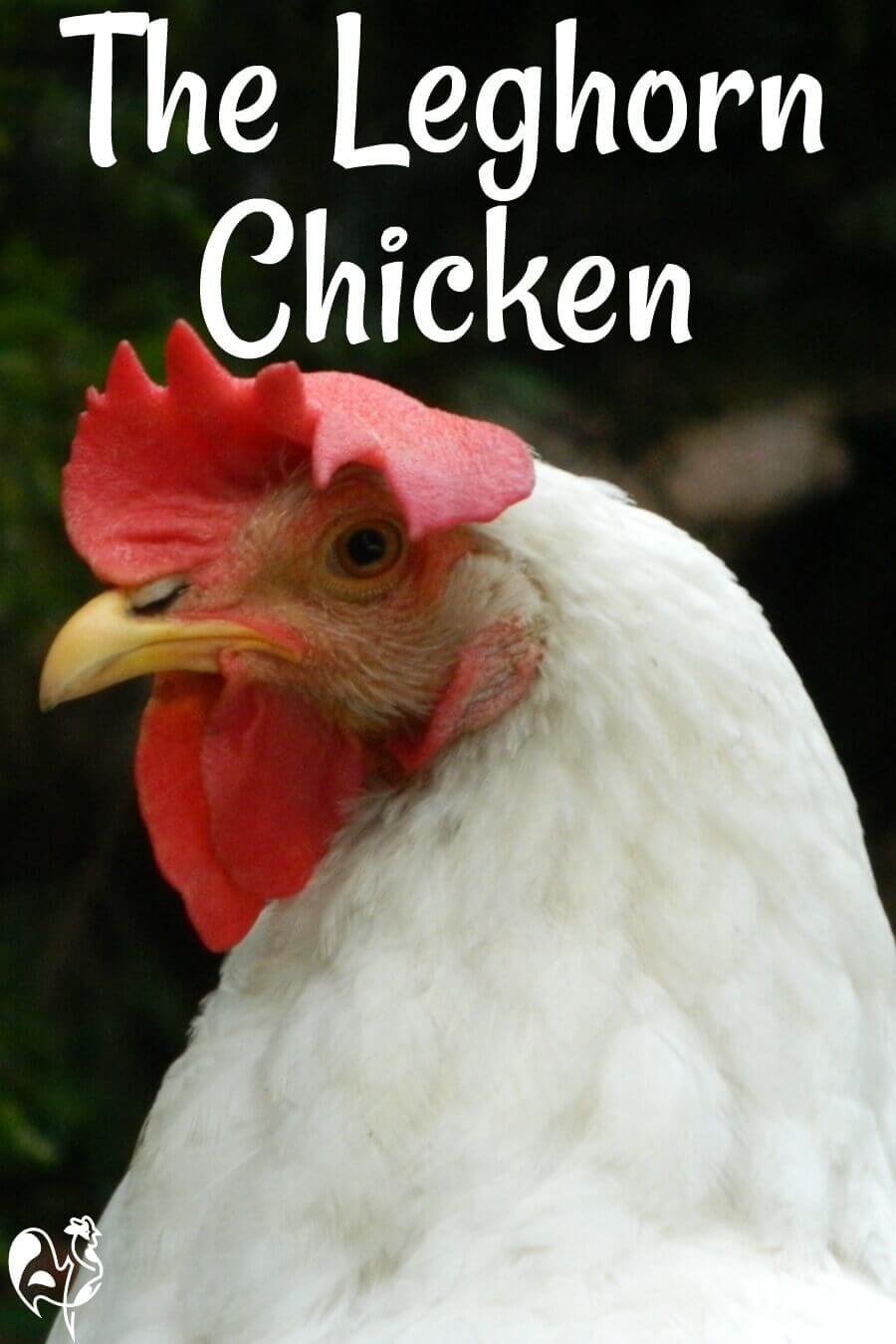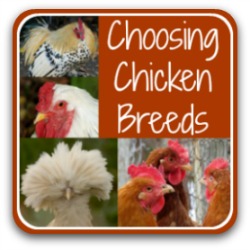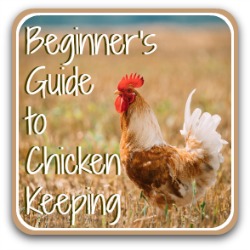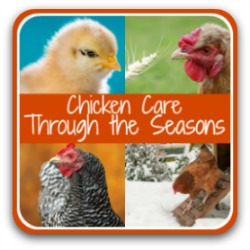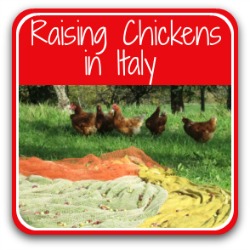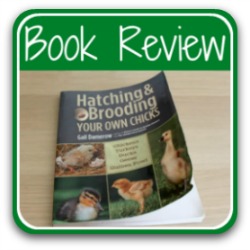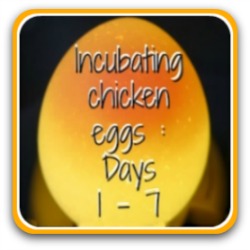The Leghorn, or Livorno, chicken breed: everything you need to know.
Survives well in both heat and cold, and is one of the best layers around. But is this really the right chicken for your family?
Here's all the information you need about the Leghorn to make the right decision.
Originally from Italy, their authentic name is the 'Livornese' or 'Livorno' - the port from which the breed was exported to the USA in the 1800s.
Leghorn is the English translation.
They're still one of the most common chickens here in Italy, for a very specific reason - they're such reliable egg-laying-chickens.
Like most people in my region, I always keep at least two or three in my flock.
But they're not right for everyone. In this article, we'll look at what's good and not so good.
(For more information about keeping chickens in rural Italy, take a look at this page).
The Leghorn / Livorno at a glance.
- A great egg-layer - one of the best!
- Survives well in any climate
- Likes to forage, but happy in a small run
- Independent, and can be a bit volatile
- Often used in commercial egg production, so widely available (especially in the UK) as 'rescue' chickens.
This is a long, detailed article.
To help you find what you're looking for, below are all the sections I cover. Click on any of the links to go straight to that section.
Where does the Leghorn come from?
Originally a brown coloured bird, the Livornese ('from Livorno') was bred in the north-west of Italy as a small-bodied chicken which laid a lot of eggs but didn't eat much food.
These are both reasons the Livorno is still very popular in Italy today.
The exact date they were taken from Italy to the United States is not clear, but was somewhere between the early 1820s and the 1850s.
By 1853 there were certainly two colours: brown - the originals - and white. These remain the two most common colours today.
The white Livorno, now re-named the Leghorn, was taken from the U.S. to England around 1870, followed by the brown a couple of years later. Neither has been as popular in the UK as in either Italy or America, although they're often used by commercial egg-producing companies because of their prolific laying.
What does a Leghorn look like?
Chicks lose their fluffy down and develop feathers very quickly, which means they can tolerate much cooler temperatures than most other young ones.
But unlike Red Stars, another good layer, there's no way of telling males from females until they're several weeks old. Both look exactly the same until the comb grows - and the crowing starts.
As an adult, they're small, compact, quite skinny birds weighing in at between 4 and 6lbs. Breeding has developed a variety of colours including silver, black and buff, but the most common remain brown and, in particular, white.
The combs of the original Leghorns are single and very large. Hens' combs flop over to one side which gives them quite a comical look.
The male's comb should stand upright, although some do flop.
No matter what colour they are, the Leghorn chicken has quite wattles, bright orange eyes, white earlobes and yellow legs.
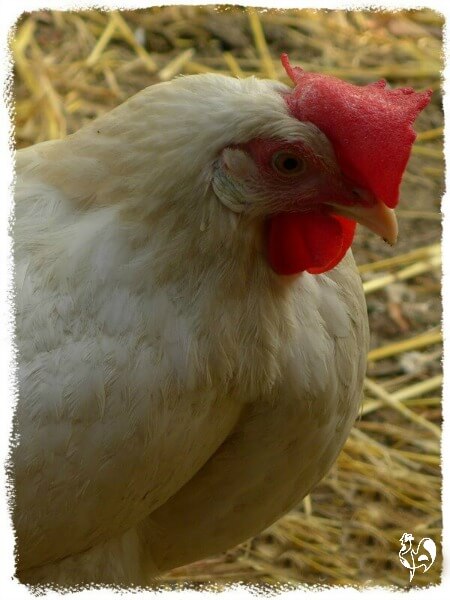 Miss LouLou, one of my white Leghorns, showing off her large and floppy comb.
Miss LouLou, one of my white Leghorns, showing off her large and floppy comb.What climate do they prefer?
They're bred to withstand extremes of temperature. They can deal with very cold winters and very hot summers with no problem.
The only real issue may be their large comb which can be susceptible to frostbite. Some American versions of the Leghorn are bred with rose combs to prevent that very problem.
Frostbite is easily avoided by making sure your coop is free from moisture which will freeze. Some owners rub Vaseline into the comb to keep it protected. However, I've kept Leghorns in very cold conditions and have never needed to do that.
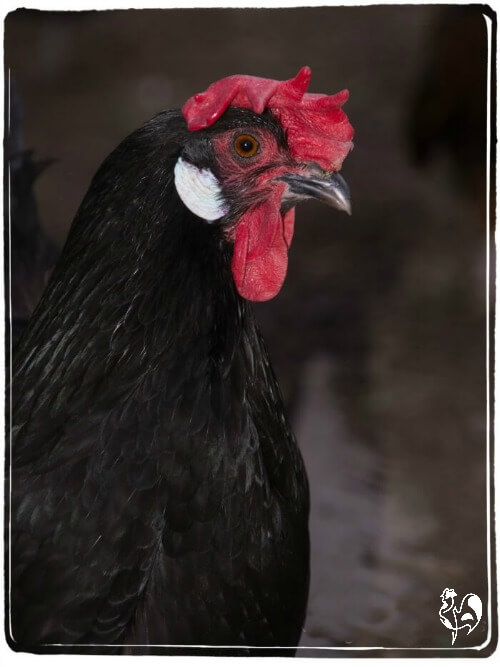 Even the black Livorno has white earlobes!
Even the black Livorno has white earlobes!What about personality?
The Leghorn is a busy bird, always very active, usually the first out of the coop in the morning and last in at night.
They're excellent at foraging. They like nothing better than to scratch around all day in even the poorest of soils, hunting for any tasty morsel they can find.
They also have a very light appetite. One of the reasons they're often used as battery hens commercially is because, although they lay a lot of eggs, they don't need a lot of food.
The fact that they're used in battery farms mean that they're often available for adoption, particularly in the UK, once they are no longer laying an egg a day.
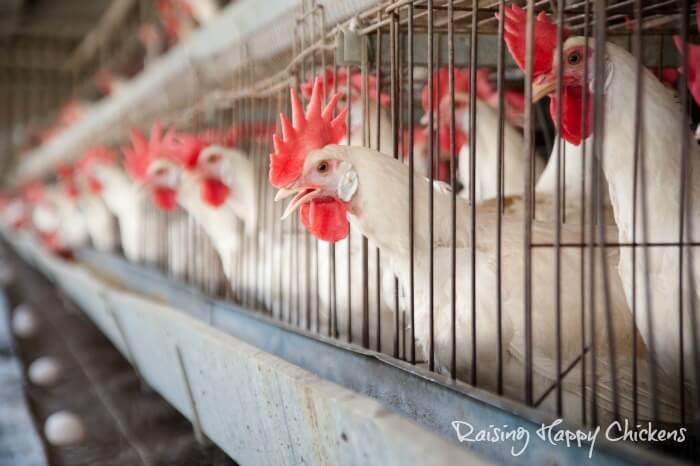 White Leghorns in commercial battery cages.
White Leghorns in commercial battery cages.They're quite independent and not the friendliest of chickens, so they can be difficult to introduce into an existing flock.
Where the Red Star is always ready for a chat and curious to know what's going on, I always find the Livorno a bit "nervy". The smallest noise sends them scattering all over the yard.
They don't much like being picked up, either, so they're not really for you if you're looking for a child-friendly pet who loves a cuddle.
Having said that, mine are rescues. Having spent the first part of their life with little human contact, they are bound to be less friendly than chicks which are handled from 2 or 3 days old, who can often become calm and friendly adults.
Males tend to be active but my experience is they are not aggressive - although again, there are always exceptions to the rule!
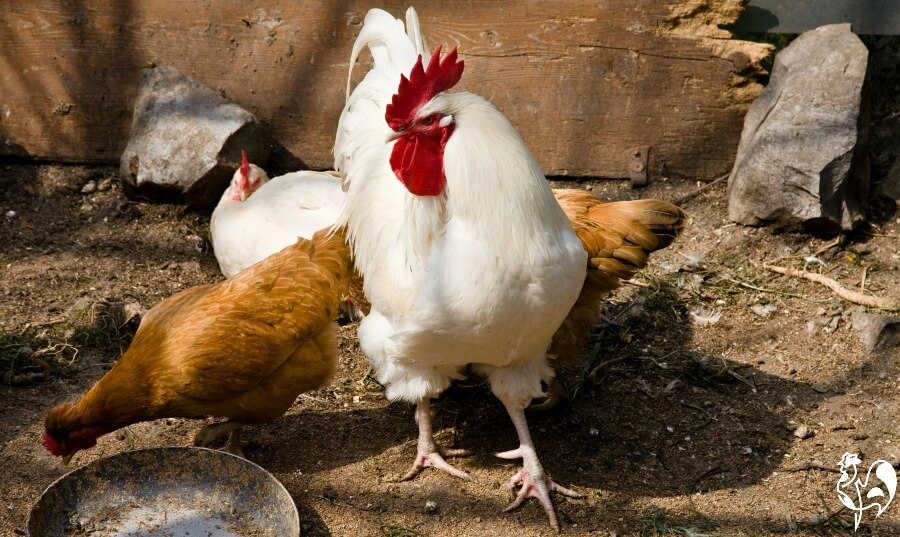 The white males have a particularly upright bearing - and note the upright comb.
The white males have a particularly upright bearing - and note the upright comb.Eggs.
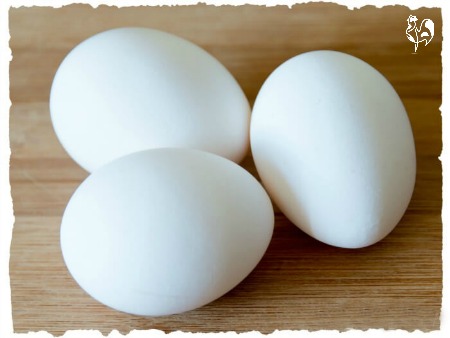
One of the Leghorn's strongest points: they lay on average 300 eggs per year.
Mine give me one a day, as regular as clockwork. Unlike other hens they don't slow down in winter, they don't slow down when it's very hot or when they're moulting. And they carry on laying until they're at least three or four years old.
They lay with a pure white shell and, once they're a few months into laying, they're the largest eggs I get.
Needless to say, their eggs taste wonderful too!
Good points.
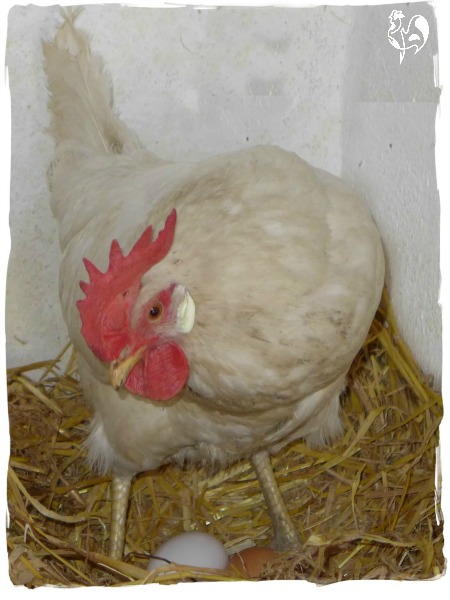 Miss LouLou had just laid when I disturbed her!
Miss LouLou had just laid when I disturbed her!- Leghorn chicks feather out quickly, making them a good choice to hatch later in the year for laying the following Spring.
- They produce a lot of eggs very regularly, and don't stop when others do - for example when they're in moult, or in the winter.
- They're less expensive than some breeds because they don't have huge appetites and they're good foragers. So they supplement their diet with bugs they find for themselves.
- They can survive extremes of both heat and cold.
- Happy in confined spaces, they'll live and forage off any type of soil.
Things which may be a problem.
- Can be very "nervy" - they get frightened at the least little thing. They're a bit too jumpy to be very child-friendly.
- Unless you raise them from chicks, they tend to be a bit "stand-offish" - they don't like to be picked up.
- Although they're excellent foragers, they don't discriminate, so watch out for your flower beds!
- Hens are not good mothers - the Leghorn is bred to lay, not hatch.
- The comb can grow very large and is susceptible to frostbite. Rubbing some Vaseline on can help with this but prevention is better than cure - make sure your coop is moisture free.
Where to buy.
USA: Cackle Hatchery.
If you live in the US, I recommend the Cackle Hatchery as providers of a wide variety of high quality chicken breeds.
They will provide all stages from hatching eggs to chicks and adult chickens, and can send either sexed or non-sexed, depending on age and breed.
Links in this section are "affiliate links", which means that if you click and buy something, I earn a small commission at no extra cost to you.
Take a look at their white Leghorns for sale.
They also have a brown Leghorn, although the true breed is only white.
Other sources to buy from.
- As with any poultry, buy from a reputable breeder. There are a lot of chickens out there described as a specific breed when they're actually a hybrid.
- If you want chickens true to the breed, look out for the characteristics described above in the flock of the person you're buying from.
- Make a judgement about the breeder. Someone who is producing good, healthy birds will talk enthusiastically – even passionately – about them.
- Avoid websites such as e-bay or Craigslist. There are some genuine sellers there, but more who will sell you infertile eggs or birds which are not the breed they're supposed to be.
- Also look in poultry magazines for breeders local to you, or go to poultry shows and hunt out the breed stand.
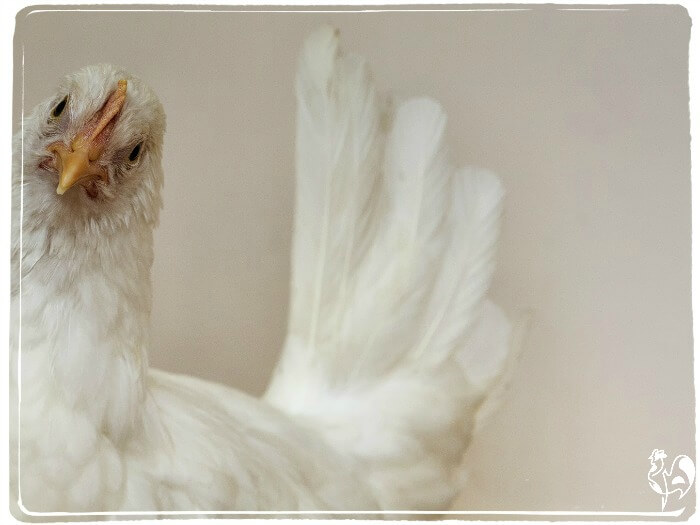
Some useful links.
The American Brown Leghorn Club has a website but it does not have a secure link - paste the name into a search engine to see it.
This link is for the breed club in Australia. Unfortunately, the Leghorn Club in the UK seems to have allowed its website to lapse.
However, there's also a breed Group on Facebook, which is often a good place to start if you want to buy. It's a 'closed' group to make sure it's kept strictly to chicken-lovers, so you'll need to request to join.
Members on there will have details of breeders in the UK.
Want to see more?
Have a look at this short video of free-range Leghorns. Enjoy!
Please note : Although the characteristics above are common across the breed, not every chicken will conform to them. Chickens, like people, are individuals. Check with whoever you buy from about the kinds of physical and personality traits their flock has.
More about the Leghorn.
(The links in this section are "affiliate links", which means that if you click and buy something, I earn a small commission at no extra cost to you).
There aren't many books specifically about the Leghorn chicken. This is a selection of the best.
Looking for an ultra-friendly egg-layer?
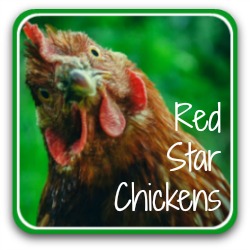
The Red Star is my favourite chicken of all time. Great in all weathers and a consistent layer of light brown eggs - almost one every single day.
Friendly, curious and chatty, they can be a bully with other chickens but they're a delight with children.
So if you're looking for a combination of a great layer and a friendly, funny, family bird, take a look at my article about them.
Click on the button or here to find out more.
